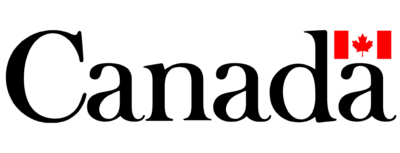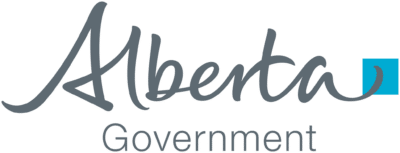As a small business owner in Alberta, navigating the world of human resources (HR) compliance can feel like a daunting task. With all the laws, rules, and regulations to follow, it’s easy to put it on the back burner. But trust us—keeping your business HR-compliant isn’t just about avoiding legal trouble; it’s also about creating a thriving workplace where employees feel safe, valued, and motivated to do their best work.
1. Know Your Alberta Employment Standards Code
First things first, you need to understand the basic rules that govern employment in Alberta. The Employment Standards Code covers everything from wages and hours of work to job-protected leaves and termination procedures. If you’re hiring employees, it’s essential to familiarize yourself with the code. Here are a few key areas to focus on:
- Minimum Wage: Ensure you’re paying your employees at least the current Alberta minimum wage (as of 2025, it’s $15.00 per hour).
- Overtime Pay: Employees are entitled to overtime pay after 8 hours of work per day or 44 hours per week.
- Job-Protected Leaves: Employees have the right to take time off for reasons like parental leave, compassionate care leave, or sick leave.
- General Holidays: Employers are required to provide time off for statutory holidays such as Labour Day and Christmas Day, and to compensate employees accordingly if they have to work on these days.
- Rest Periods: Employers must provide at least a 30-minute rest period for every five hours worked, which is an important aspect of employee wellbeing and compliance.
- Pay Statements: Employers are required to provide employees with detailed pay statements, outlining the hours worked, wages paid, and any deductions made. This transparency helps avoid disputes and ensures employees are fully aware of their pay.
- Vacation Entitlement: Employees are entitled to vacation time, and after completing one year of employment, they are entitled to two weeks of vacation each year. Employers must compensate for unused vacation days in accordance with the law.
- Termination of Employment: Whether you’re terminating an employee or an employee is leaving, the Employment Standards Code outlines the requirements for notice or severance pay. It’s important to ensure that proper notice periods are given to employees and the necessary payments are made to avoid legal issues.
2. Write Clear Employment Contracts
When it comes to employment contracts, clarity is key. Whether your employees are full-time, part-time, or temporary, having a solid, written agreement in place is essential. This contract should outline:
- Job description
- Wage and benefits
- Working hours
- Termination procedures
A well-drafted contract ensures that both you and your employees are on the same page. If an issue ever arises, you’ll have a solid reference point. Plus, it helps avoid any “he said, she said” scenarios. See our resources below if you need help with this.
3. Ensure Workplace Safety
Alberta businesses are required to follow the Occupational Health and Safety Act (OHS), which mandates that employers take steps to protect their workers. This includes everything from ensuring proper safety equipment is provided to addressing workplace hazards. Depending on your industry, you may also need to develop a safety plan and hold regular safety training sessions.
Even if your business doesn’t have a traditional “dangerous” work environment, make sure you have basic safety measures in place. A slip in the office can still land you in legal hot water.
4. Get to Know Youth Employment Rules
If you’re hiring young employees (under 18), be sure you understand Alberta’s youth employment rules. These guidelines include restrictions on the types of work and the hours minors can work. For example, youth workers can’t be employed for more than 8 hours per day or during late-night shifts (usually after 11 p.m.).
5. Required Employee Forms and Employment Records
In addition to the core compliance areas, it’s crucial to ensure that your business maintains the proper employee records and completes the necessary forms. Here are some key requirements:
- Record of Employment (ROEs): An ROE is mandatory for all employees who leave the company, no matter the reason for their departure. Whether an employee resigns, is terminated, or their contract ends, an ROE must be issued. This document is vital for employees to access Employment Insurance (EI) benefits, so be sure to complete and submit the form promptly.
- Workers’ Compensation Board (WCB) Coverage: Employers in Alberta are required to provide WCB coverage for all employees. This protects workers in case of workplace injuries or illnesses, and it’s mandatory for businesses in almost every industry. Ensure that you’re registered with WCB and that your employees are covered.
- TD1 Forms (Federal and Provincial): Each employee must complete both federal and provincial/territorial TD1 forms (Personal Tax Credits Return). These forms allow you to calculate the proper amount of income tax to withhold from their wages. Employees should submit these completed forms to you at the beginning of their employment and whenever they make changes to their tax credits. Keep these forms on file for your records, as they are essential for accurate payroll processing.
6. Termination Procedures
Terminating an employee can be tricky, and it’s not just about “letting them go.” Alberta’s employment standards require that you follow proper termination procedures, including providing notice or termination pay. If the employee has been with your company for more than 90 days, they’re entitled to at least one week of notice, or equivalent pay.
And remember, an exit interview can help you gather valuable feedback, even in difficult situations. Plus, it leaves the door open for a more positive parting (you never know when they might become a client someday!).
7. Use Helpful Resources
Keeping up with HR compliance doesn’t have to be a full-time job. Take advantage of tools and resources that are available to help you stay on track. For example:
- Alberta Employment Standards Website: A fantastic site for reviewing the most up-to-date employment laws in Alberta.
- Interactive Employer Toolkits: Alberta provides comprehensive toolkits to help you understand your responsibilities and comply with employment standards. These resources cover everything from hiring to termination and can help make compliance easier to manage.
- Employment Standards Self-Assessment Tool: This self-assessment tool from the Government of Alberta helps you assess whether your business is compliant with employment standards, allowing you to identify areas for improvement.
- The Law Depot – Free legal documents, forms and employee contracts.
- WCB – Workers Compensation Board: Ensure you have the appropriate coverage for your employees by visiting the WCB Alberta website.
- Occupational Health and Safety Resources: Best practices, guides and manuals as well as templates you can use to set up your safety policies.
Running a small business comes with many challenges, and HR compliance doesn’t have to be one of them. By staying on top of your responsibilities, you’ll avoid costly mistakes and create a work environment where everyone can thrive. With all that compliance sorted, you can focus more on what you do best—growing your business!
Need help navigating HR compliance or unsure where to start? Book a free consultation with a Business Link advisor today.
Sources:
- Alberta Employment Standards Rules: Alberta.ca Employment Standards Rules
- Employment Standards Toolkit for Employers: Employment Standards Tool Kit Overview (2023)
- Alberta Occupational Health and Safety Act: Alberta OHS Act
- Employment Standards Video: Employment Standards Overview Video





